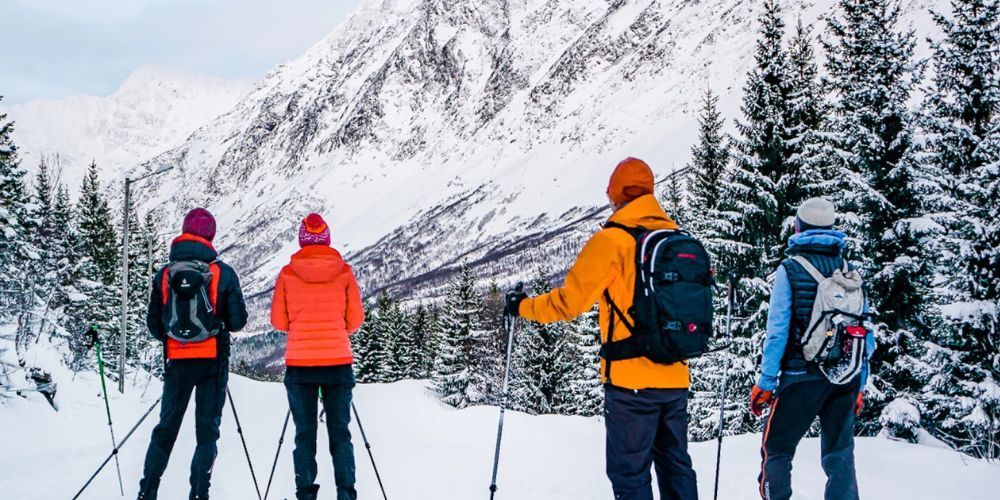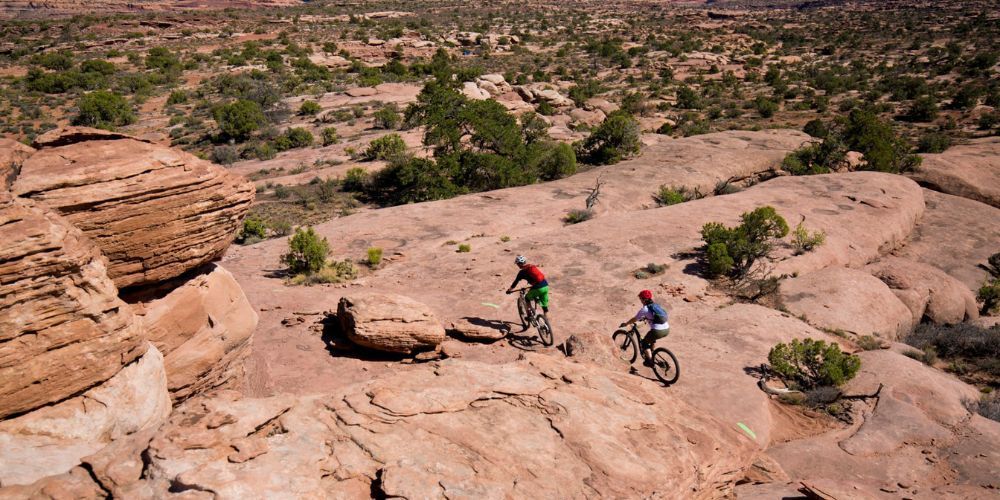Cold-Weather Hiking: Essential Gear and Tips for Winter Adventures
September 17, 2024
Winter hiking is an entirely different challenge that demands more than just a love for the outdoors; it requires meticulous preparation and specialized gear to ensure your safety and comfort. When icy winds howl through frosted trees and snow cloaks the familiar trail underfoot, having the right equipment isn't merely convenient — it's crucial. From selecting a backpack sturdy enough to withstand freezing temperatures to choosing layered clothing that manages body heat efficiently, each piece of gear plays a vital role.
During these excursions into frozen landscapes, I’ve learned that every detail counts. The blinding glare of snow can obscure paths you once knew by heart, turning what should be a tranquil hike into a potentially disorienting experience without a proper GPS device or map. Through careful planning and gathering advice from seasoned hikers and outdoor experts alike, this guide distills essential insights making sure you’re geared up properly before stepping into those breathtaking wintry terrains.
When embarking on a cold-weather hiking adventure, it's crucial to focus on layering your clothing with moisture-wicking base layers, insulating mid-layers, and a protective shell layer. Additionally, ensure you have proper gear such as waterproof boots, gloves, hats, and gaiters to protect against frostbite and hypothermia while keeping hydrated with warm liquids throughout your hike.
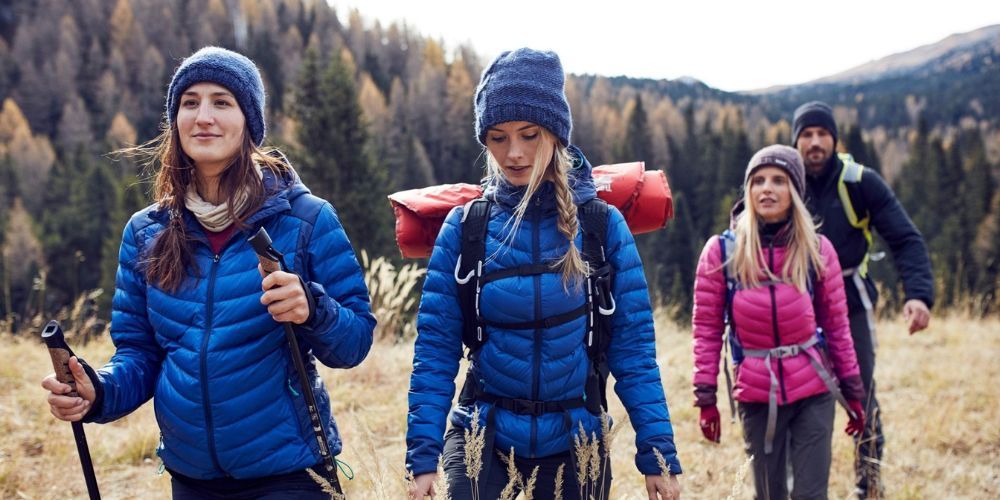
Essential Cold-Weather Hiking Gear
Starting with a vital piece of equipment, a durable, waterproof backpack is essential for any cold-weather hiker. This isn't just a luxury; it's your main vessel for carrying all the gear you'll need to stay safe and comfortable.
Look for a capacity of at least 30 liters to ensure you have ample space for extra clothing layers, food, water, and safety equipment. Remember that packing correctly influences how well you can maneuver through the cold. A well-organized pack allows easy access to items like snacks or warm drinks without having to struggle in the snow.
Beyond just carrying gear, keeping your body warm is crucial during these adventures.
This is where a portable stove comes into play. Picture this: after several hours of trudging through snow-covered trails, nothing beats the pleasure of sipping hot tea or coffee brewed fresh on your stove. Not only does it provide warmth from the inside out, but hot meals are also critical for maintaining energy levels when navigating challenging terrain.
Invest in a lightweight model that’s easy to assemble and use, ideally one that fits snugly in your backpack without adding unnecessary weight.
With warmth and hydration secured, don’t overlook the importance of knowing where you're going.
Navigational tools are fundamental on winter hikes because trails can easily become obscured by snow. Be sure to pack:
- A reliable GPS device,
- A traditional map,
- A sturdy compass.
These tools will help you find your way back if visibility drops unexpectedly. In my personal experience, I've had great success using apps like Gaia GPS, which provides reliable mapping even in remote locations. Dependable navigation tools are not just gadgets; they are safeguards against becoming disoriented in harsh conditions.
While preparation can help prevent issues, it’s wise to be ready for potential challenges during your hike.
Thus, including safety gear is non-negotiable. Your safety kit should contain at least a first-aid kit to address minor injuries, a whistle to signal for help if necessary, and a headlamp with extra batteries for those shorter daylight hours in winter months. Additionally, a multi-tool can be invaluable for making quick adjustments or repairs on the trail. These items may seem small but can make a crucial difference between an inconvenience and a serious situation.
Understanding these essentials equips you for survival while allowing you to enjoy winter's beauty as you explore its hidden trails. As you prepare for your next venture into the snowy wilderness, let's look closely at how layering effectively can enhance your comfort and performance while hiking during cold weather.
Layering System for Winter Hikes
The right layering system serves as your best defense against the elements when you're tackling winter hikes. Think of it as your armor; each layer plays a crucial role in maintaining warmth, removing moisture, and providing protection against wind and snow. To achieve maximum comfort, it's essential to choose your layers wisely, considering the materials and their functions.
The Base Layer
Starting with the base layer, its primary function is to manage moisture. This layer should fit snugly against your skin to wick away sweat effectively. Natural fibers like merino wool or synthetic fabrics are your best friends here. Not only do they pull moisture away from your body, keeping you dry, but they also provide warmth even when wet—a critical feature in cold conditions. On the other hand, steer clear of cotton; despite its widespread availability, cotton retains moisture and will chill you to the bone in cold weather.
As we move up from the base layer, we find ourselves in the realm of insulation.
The Mid Layer
The mid layer provides insulation and helps retain body heat, making it an essential part of your winter hiking attire. Fabrics like fleece or down jackets excel at trapping warmth while remaining breathable enough to allow moisture generated by your activity to escape. Here’s where personal preference kicks in—some hikers favor synthetic insulation because it's often more budget-friendly and dries faster after getting wet. Others swear by natural down for its unmatched warmth-to-weight ratio. Remember, if you choose down, consider a water-resistant version to ensure it performs well during unexpected snow or rain.
Once you've settled on an adequate mid-layer option that balances warmth and breathability for your hiking style, it's time to examine what goes on top.
The Outer Layer
Your outer shell is like the first line of defense against frigid air and precipitation. This layer should be both waterproof and windproof but still breathable enough to prevent overheating from trapped sweat. Look for fabrics such as Gore-Tex or similar alternatives that offer these qualities. Many outdoor garments are designed with vents or adjustable features that enhance airflow when needed. This becomes essential during strenuous uphill climbs where excessive perspiration can build up quickly.
Remember: The effectiveness of a layering system lies in its flexibility. You might need to add or remove a layer as conditions fluctuate throughout your hike; hence the ability to adjust is key to staying comfortable.
Understanding these layers paves the way to explore another vital aspect of cold-weather hiking—the footwear that will keep your feet warm and secure against the elements.
Must-Have Winter Hiking Footwear
When it comes to winter hiking, your footgear is your first line of defense against the cold and wet conditions. The right footwear protects your feet from frostbite and provides traction needed to navigate slippery trails safely.
Insulated Boots
Insulated and waterproof boots are essential for anyone venturing into colder climates. Brands like Salomon and Oboz have built a solid reputation for manufacturing high-quality winter boots designed for harsh weather. I personally recommend choosing a boot with a height above the ankle, as this added elevation keeps snow out and enhances overall warmth and stability during your treks. A good pair of insulated boots effectively traps heat while preventing moisture from seeping in, which can be critical on snowy hikes.
However, just having insulated boots isn’t sufficient; finding ways to prevent snow and moisture from entering around your ankles is equally important.
Gaiters
This is where gaiters come into play. These handy pieces of gear cover the gap between your boots and pants, acting as a barrier to keep snow out and ensuring that you stay dry throughout your hike. Gaiters are especially useful when you're trekking through deep snow or muddy terrain, as they help maintain a clean and dry interior environment within your boots. I have often found that using gaiters allows me to focus on my hike without worrying about constant snow accumulation down my legs or inside my footwear.
In addition to keeping your feet warm and dry, enhancing traction is paramount when hiking in winter conditions.
Traction Devices
Consider traction devices as winter tires for your feet. These devices, such as microspikes or crampons, provide that extra grip needed on icy paths where slips can easily lead to injury. Imagine taking on a steep, snow-covered path—without these tools, each step could become stressful and risky. From my experience, attaching microspikes to your boots before heading onto slick surfaces offers peace of mind. They effectively bite into ice and offer much-needed stability, transforming precarious conditions into manageable paths.
The right combination of insulated boots, gaiters, and traction devices lays the foundation for enjoyable and safe winter hiking experiences. Investing time and resources into selecting suitable winter hiking footwear will pay off in comfort and confidence on those beautiful snowy trails.
As we continue our exploration of essential gear for winter adventures, let’s consider how outerwear plays a vital role in maintaining warmth and protection against the elements.
Choosing the Right Outerwear
Selecting the appropriate outerwear is crucial for a successful cold-weather hiking adventure. Imagine setting off into the crisp mountain air, only to be halted by shivering because you chose a jacket that isn't properly insulated or waterproof. A well-fitted, multi-layered outer layer protects against cold winds, moisture, and unexpected weather changes—all vital when you're out on the trails.
Waterproof Jackets
A high-quality waterproof jacket will serve as your shield against snow and rain. It's important to seek features such as adjustable hoods that can provide coverage without obstructing your field of vision and sealed seams that prevent moisture from seeping in. Popular brands like Patagonia and Arc'teryx have built a reputation for their reliable jackets, capable of handling even the harshest elements while being comfortable to wear. Notably, look for jackets made with breathable materials; this will help wick away sweat during physical exertion, keeping you dry inside while protecting you from outside moisture.
Insulated Pants
Just as crucial as your jacket are insulated pants designed for winter conditions. These shouldn't just be any pants; waterproof options are essential to keeping your lower body warm when trudging through heavy snowfall or wet conditions. Select pants that offer breathability as well to avoid an uncomfortable build-up of sweat when you're on the move. The insulation should provide warmth without adding bulk—look for options that allow you freedom of movement so you can tackle those rugged trails comfortably.
Ventilation Options
An often-overlooked feature in outerwear is ventilation options—think zippered vents in jackets and pants. These are invaluable for maintaining optimal comfort during periods of strenuous activity. When climbing steep hills or navigating challenging terrains, opening these vents allows heat to escape without sacrificing warmth completely when you need it. By adjusting these features seamlessly based on activity levels, you'll stay comfortable throughout your hike.
With this understanding of how to properly equip yourself for winter hiking, we can now explore the necessary items to pack to ensure you’re prepared for all that the trails have in store.
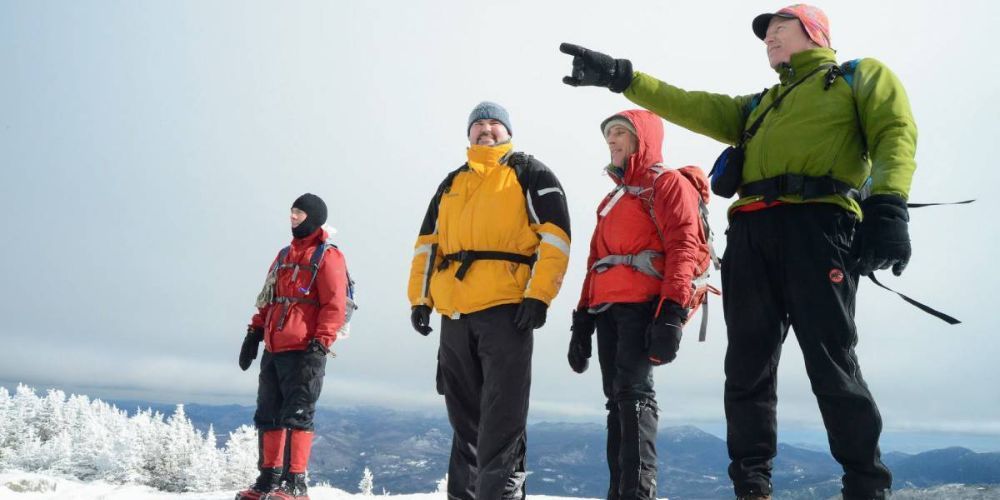
Packing for Winter Trails
Efficient packing can greatly impact your comfort and safety when hiking in winter. You'll want to ensure that every item serves a purpose and contributes to your overall well-being on the trails—especially during those frigid temperatures. Start by considering what’s essential for maintaining a safe and enjoyable experience outdoors; it’s not just about filling your backpack with gear, but organizing it wisely.
Step I - Prioritize Safety
Always begin with safety gear at the forefront of your mind. As a personal anecdote, on one particularly chilly hike, my partner tripped and sprained an ankle. Thankfully, we had packed a well-stocked first-aid kit that allowed us to address the situation right away. You never know what might happen on the trails, so include essential items like an emergency blanket, which can trap heat, and a fire-starting kit in case you find yourself in an unexpected situation. These few fundamental items might just be the difference between comfort and distress out there.
Step II - Food and Hydration
Next up is food: consider high-calorie snacks that won’t spoil easily. Opt for nuts, energy bars, or jerky to keep your boost of energy reliable. While hiking in winter, you burn calories quicker than during warmer months due to your body working harder to maintain its core temperature. Therefore, keeping energy levels up becomes critical for lasting endurance.
Step III - Hydration System
Alongside food, hydration is vital despite the cold air; oftentimes hikers neglect this aspect simply because they don’t feel thirsty. A hydration bladder fitted with an insulated sleeve can be incredibly effective in preventing freezing liquids while remaining easily accessible throughout your hike. Alternatively, consider packing thermally insulated water bottles—these are designed to withstand cold temperatures longer while keeping beverages hot if needed. Remember: staying hydrated will help stave off fatigue and ensure your body operates efficiently.
Step IV - Extra Clothes
Lastly, bring an extra set of base layers, socks, and gloves. Wet clothing in winter conditions is a recipe for hypothermia; conversely, having dry spare clothing could mean the difference between shivering uncontrollably and enjoying a cozy break around the campfire. Pack these items snugly into your bag so they take up minimal space but remain accessible when necessary.
By focusing on essentials like safety gear, food, hydration, and extra clothing, you create a solid foundation for an enjoyable adventure ahead. This attention to detail is crucial as we explore strategies for safeguarding vulnerable areas from harsh winter conditions.
Protecting Extremities in Cold Weather
When embarking on a cold-weather hike, your extremities—fingers, toes, ears, and nose—are often the first places to feel the bite of frigid temperatures. This vulnerability makes it crucial to have the right gear that not only insulates but also allows for some mobility.
When I think back on my own experiences trudging through snow-laden trails, I reflect on how essential proper protection has been.
Gloves and Mittens
Choosing gloves and mittens can sometimes feel like a balancing act between warmth and functionality. Layered gloves with a waterproof outer shell are undoubtedly your best allies, as they keep moisture and wind at bay while providing insulation.
It's worth noting that mittens typically offer more warmth than gloves because they allow your fingers to share heat. Many seasoned hikers recommend using a combination: a pair of thin gloves worn inside mittens strikes an optimal balance between warmth and dexterity. In cases where you need to handle gear or fiddly equipment—like adjusting straps on your pack—this layering system allows you to shed the mittens temporarily while still keeping some warmth in.
Headwear
Don’t underestimate the role of headwear in retaining body heat; it's fundamental in reducing heat loss from your body. A thermal hat combined with a neck gaiter shields your head and neck from chilling winds.
I remember one particularly windy hike when I neglected my neck; within minutes, I felt cold creeping down my spine, illustrating just how essential that extra layer can be. Opting for materials like fleece or wool ensures both insulation and breathability, which is key when temperatures fluctuate during your trek.
Socks and Footwarmers
Likewise, when it comes to protecting your feet, wool socks are exceptional for insulation, offering warmth even when damp. They wick moisture away, preventing that uncomfortable chill caused by sweat accumulation during a strenuous hike.
For those exceptionally bitter days—when biting winds seem relentless—consider battery-operated foot warmers. These handy devices can be game-changers under freezing conditions, ensuring that your toes remain warm and comfortable without the numbing effects of frostbite creeping in.
As you gear up for those chilly outings, understanding how to equip yourself effectively will make every step manageable and enjoyable. With safety in mind, it's time to explore the most enticing trails awaiting your adventure.
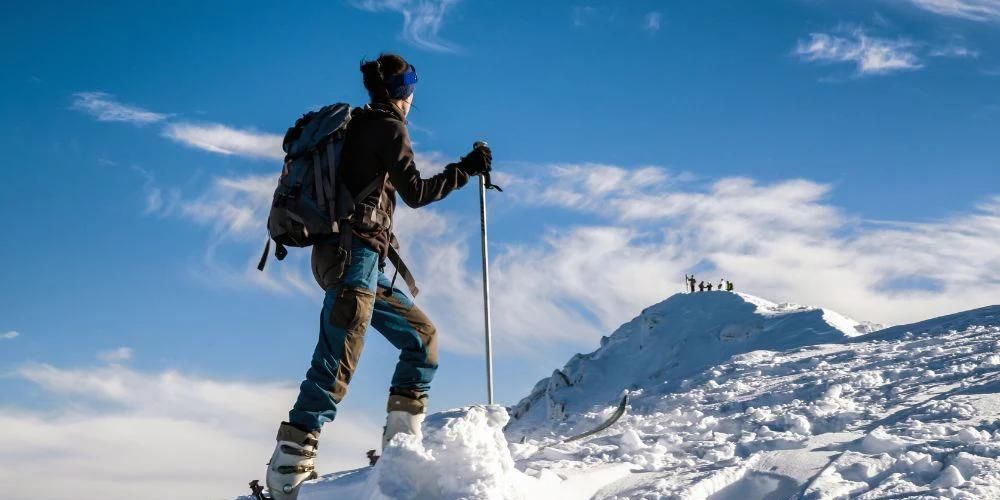
Recommended Winter Hiking Trails
Not all trails are created equal when winter arrives; some become treacherous, while others transform into serene wonderlands. Caring for safety and enjoyment is paramount, making the selection of the right trails crucial. Certain trails are well-known for their winter accessibility and beauty. When planning your adventure, consider exploring trails with varied terrain and breathtaking views that match your skill level.
Trail Recommendations by Region
| Region | Trail Name | Difficulty | Distance | Highlights |
|---|---|---|---|---|
| Northeast | Mount Washington, NH | Hard | 4.2 miles | Stunning views but extreme conditions |
| Midwest | Ice Age Trail, WI | Moderate | 12 miles | Glacial landscapes |
| West Coast | Big Pine Lakes, CA | Moderate | 15 miles | Gorgeous alpine lakes |
Each of these trails offers a unique experience. For instance, Mount Washington in New Hampshire may pose a challenge due to its harsh conditions but rewards hikers with panoramic views that make every exertion worthwhile. The treacherous weather can change rapidly, so preparedness is key—carry extra layers and check forecasts before heading up.
As we move to the Midwest, the Ice Age Trail presents a different kind of charm.
This trail meanders through glacial terrain, exposing hikers to remarkable geological features that tell a story of nature’s power over millennia. While moderately challenging, it’s manageable for those familiar with winter hiking basics. You might just find yourself lost in the peacefulness of snow-covered hills framed by frosted trees.
Finally, let’s not overlook the West Coast’s breathtaking Big Pine Lakes trail.
A moderate hike with stunning alpine lakes as your backdrop offers an excellent escape. With expansive vistas ranging from rocky ridges to sparkling blue waters reflecting the sky above, this trail invites you to embrace the tranquility that winter brings. Keeping an eye on conditions will enhance your experience; consult local guides or fellow hikers about current trail settings.
Local Insights
Before hitting the trail, talking to local hiking clubs or park rangers is invaluable in finding safe routes tailored for winter excursions.
They provide real-time advice regarding trail conditions since factors such as freshly fallen snow or unexpected weather fluctuations can significantly affect accessibility and safety. Plus, they often have tips on necessary gear tailored to specific trails!
Embracing local knowledge enhances the hiking experience and ensures you're prepared to face whatever nature has in store during your winter adventures. Gather your gear and enjoy the splendid beauty that cold-weather hiking has to offer!
The thrill of cold-weather hiking awaits those who equip themselves properly and choose wisely from the available trails. Adventure can be found in every snowy landscape you traverse this winter season.
What should I wear for cold-weather hiking?
When hiking in cold weather, layering is key. Start with a moisture-wicking base layer to keep sweat off your skin, followed by an insulating mid-layer like fleece or down for warmth, and finish with a waterproof and windproof outer shell. Don’t forget a hat, gloves, and insulated hiking boots to protect your extremities. Avoid cotton, as it traps moisture and can make you colder.
How do I stay safe while hiking in winter conditions?
Safety in cold-weather hiking begins with preparation. Always check the weather forecast, and be aware of shorter daylight hours. Pack essentials like a map, compass, headlamp, extra layers, and high-energy snacks. Ice traction devices for your boots, such as microspikes, can help prevent slips on icy terrain. Be mindful of signs of hypothermia and frostbite, and always hike with a buddy or let someone know your route.
What are the best materials for winter hiking gear?
The best materials for cold-weather hiking gear are those that insulate well and keep moisture at bay. Merino wool and synthetic fabrics like polyester or nylon are ideal for base layers since they wick moisture and dry quickly. Fleece and down provide excellent insulation for mid-layers, while GORE-TEX and similar materials are great for outer shells due to their waterproof and windproof properties. Ensure that your hiking boots are insulated and waterproof to keep your feet warm and dry.
Are there any specific hydration tips for hikers in cold weather to prevent dehydration?
 Button
ButtonIn cold weather, hikers often underestimate their hydration needs, leading to dehydration; it's crucial to drink water regularly, even if you don't feel thirsty. The dry air and increased respiration rates at lower temperatures can drain your body fluids faster than you think—up to 40% more water is lost through respiration in cold conditions compared to warmer climates. To combat this, aim to drink about half a liter of water every hour, and consider using insulated bottles or hydration systems to prevent freezing. Remember that warm fluids not only hydrate but help maintain body temperature as well!
Check out the latest guides on hiking gear
Author: William Flaiz
All Rights Reserved | Sports and Nature Gear









